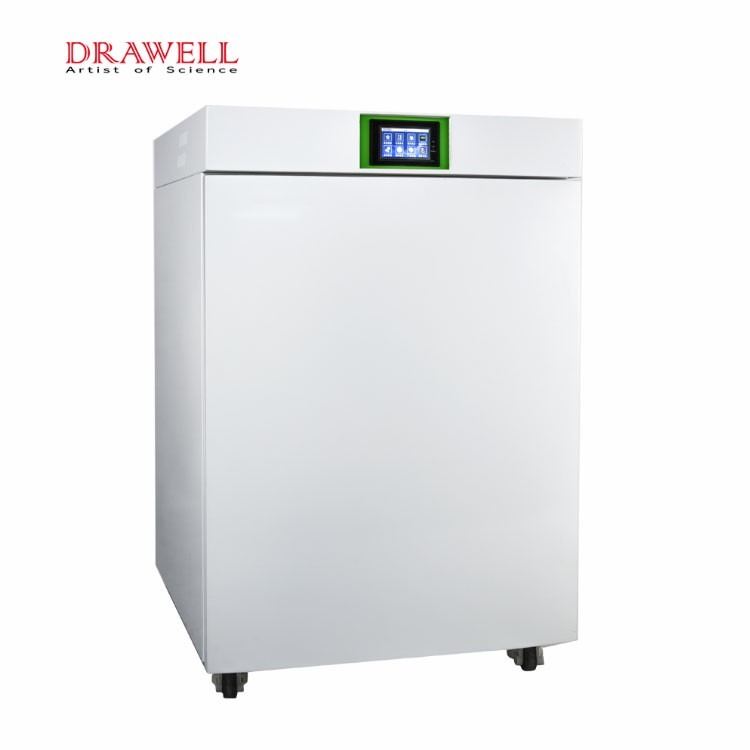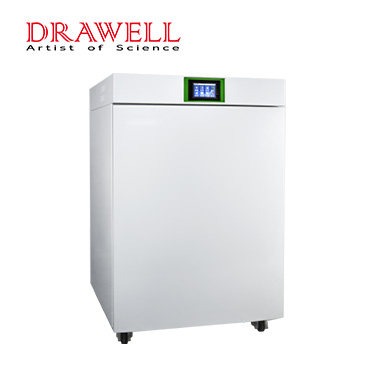CO2 incubators are essential laboratory equipment used in various scientific disciplines, including cell culture, microbiology, and molecular biology. These incubators provide a controlled environment for the growth and maintenance of cells and organisms. While they are highly efficient and reliable, it is crucial to follow specific precautions to ensure their safe and effective use.
General Precautions
To begin, familiarize yourself with the user manual and manufacturer’s instructions. Each incubator model may have unique features and operational guidelines. Proper installation and regular maintenance are essential to ensure optimal performance and prevent malfunctions. Additionally, adhering to basic laboratory safety practices, such as wearing personal protective equipment (PPE), is vital to protect yourself and maintain a safe working environment.

Safety Precautions
Ventilation: Proper ventilation in the incubator room is crucial to prevent the accumulation of CO2 and other gases. Ensure that the room is adequately ventilated to maintain a safe working environment.
Gas Supply: Regularly inspect and maintain the gas supply lines to the incubator to prevent leaks or contamination. Check for any signs of damage or degradation and address them promptly. It is also important to use the appropriate gas cylinders and follow proper handling procedures.
Alarm System: Install a backup alarm system that can alert you to deviations in temperature, CO2 levels, or power failures. This redundancy ensures that any abnormalities are detected promptly, allowing you to take corrective action.
Cleanliness: Keep the incubator clean and free from debris or spills that can cause contamination or damage. Regularly clean and disinfect the interior surfaces according to the manufacturer’s recommendations.
Hazardous Substances: Exercise caution when handling hazardous substances or samples inside the incubator. Follow proper safety protocols, such as using containment systems and wearing appropriate PPE, to minimize the risk of exposure or accidents.
Operational Precautions
Operating Conditions: Understand and follow the recommended operating conditions, including temperature and humidity settings. Deviations from the recommended parameters may affect the growth and viability of cells or organisms.
Calibration and Validation: Periodically calibrate and validate the incubator’s sensors and controllers to ensure accurate readings and reliable operation. Consult the manufacturer’s guidelines for the recommended calibration frequency and procedure.
Avoid Overcrowding: Do not overcrowd the incubator as it hinders proper air circulation, which is essential for maintaining a stable and uniform environment. Ensure that samples and containers are appropriately spaced to allow for adequate airflow.
Minimize Door Openings: Limit the frequency and duration of door openings to prevent temperature and CO2 fluctuations. Frequent openings can disrupt internal conditions and affect the growth and integrity of the cultures.
Water Pan/Humidity System: If your incubator has a water pan or humidity system, regularly check and maintain it to ensure proper functioning. Monitor the water levels and clean or replace the water as needed to maintain the desired humidity levels.
Sample Handling Precautions
Containers and Labeling: Use appropriate containers and vessels to prevent sample leakage or contamination. Ensure that all containers are tightly sealed to prevent gas exchange. Properly label samples to avoid confusion and cross-contamination.
Hazardous Samples: If working with hazardous or volatile samples, use suitable secondary containment systems to minimize the risk of exposure or release. Follow proper decontamination procedures before removing samples from the incubator to prevent contamination of the external environment.

Emergency Preparedness
Emergency Shutdown: Familiarize yourself with the emergency shutdown procedure and the location of safety equipment, such as fire extinguishers or emergency exits. In the event of an emergency, knowing how to quickly and safely shut down the incubator is crucial.
Contact Numbers: Keep a list of emergency contact numbers readily accessible near the incubator. This includes the numbers for maintenance personnel, laboratory management, and relevant safety personnel.
Backup Power: Establish a backup power source or contingency plan to maintain critical incubator conditions during power outages. Uninterruptible power supply (UPS) systems or generators can help ensure continuous operation and prevent disruption of experiments.
Regular Testing: Regularly test and maintain backup systems, such as gas supply, alarms, and temperature monitoring. Periodically check the functionality of these systems to ensure they are operational when needed.
Training and Documentation
Personnel Training: Ensure that all personnel using the incubator receive adequate training on its operation, maintenance, and safety procedures. This training should cover proper usage, emergency protocols, and routine maintenance.
Logbook: Maintain a logbook to record regular checks, maintenance activities, and any incidents or deviations observed. This logbook serves as a valuable resource for tracking the incubator’s performance and identifying trends or issues that require attention.
Periodic Reviews: Conduct periodic reviews and audits of incubator usage and safety protocols. This helps identify areas for improvement and update protocols accordingly to ensure the ongoing safety and reliability of the incubator.
Conclusion
Adhering to the necessary precautions for using a carbon dioxide incubator is paramount to ensure the safety of laboratory personnel and maintain the integrity of the experiments. By following these guidelines, you can mitigate potential risks and create an optimal environment for cell culture and other research activities. Remember, continuous monitoring, regular maintenance, and ongoing training are essential to maximize the performance and longevity of your carbon dioxide incubator.




